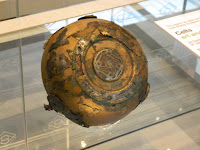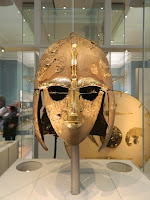
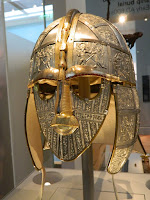 The Sutton Hoo burial was discovered in 1939 after exploration of largest burial mound at Edith Pretty’s estate at Suffolk. Inside the mound, the imprint of a 27-metre-long, decayed ship, studded with iron rivets containing burial chamber was found. The burial took place in early AD 600s, when Sutton Hoo belonged to East Anglia, one of competing Anglo – Saxon kingdoms. Sutton Hoo is the most significant find from early medieval Europe, also the richest, containing many artifacts of exquisite craftsmanship, probably commemorating a person of extreme wealth or high status, possibly an Anglo-Saxon King of East Anglia.
The Sutton Hoo burial was discovered in 1939 after exploration of largest burial mound at Edith Pretty’s estate at Suffolk. Inside the mound, the imprint of a 27-metre-long, decayed ship, studded with iron rivets containing burial chamber was found. The burial took place in early AD 600s, when Sutton Hoo belonged to East Anglia, one of competing Anglo – Saxon kingdoms. Sutton Hoo is the most significant find from early medieval Europe, also the richest, containing many artifacts of exquisite craftsmanship, probably commemorating a person of extreme wealth or high status, possibly an Anglo-Saxon King of East Anglia.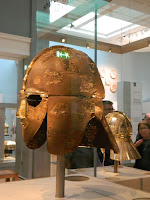
 Sutton Hoo helmet is one of just four complete helmets discovered from Anglo-Saxon England. Reconstructed from shattered condition in which it was found. The helmet consists of an iron cap with a crest, neck guard, cheek pieces and face mask. It was originally covered with tinned copper alloy panels, decorated with animal and warrior motifs. Similar helmets are known from eastern Sweden, what indicates traditions and culture being shared with East Anglia. Small number of such helmets suggests those of great wealth an status could only afford them.
Sutton Hoo helmet is one of just four complete helmets discovered from Anglo-Saxon England. Reconstructed from shattered condition in which it was found. The helmet consists of an iron cap with a crest, neck guard, cheek pieces and face mask. It was originally covered with tinned copper alloy panels, decorated with animal and warrior motifs. Similar helmets are known from eastern Sweden, what indicates traditions and culture being shared with East Anglia. Small number of such helmets suggests those of great wealth an status could only afford them.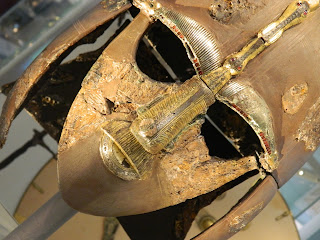



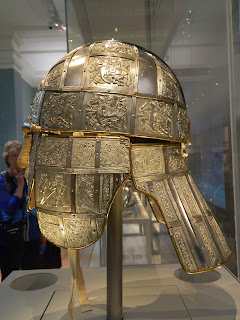
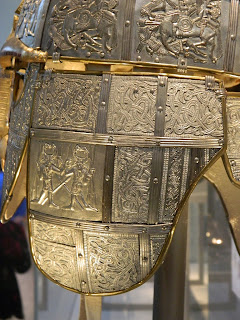
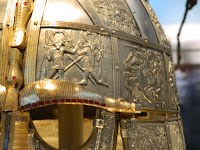
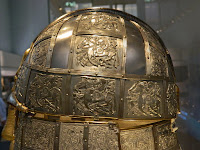
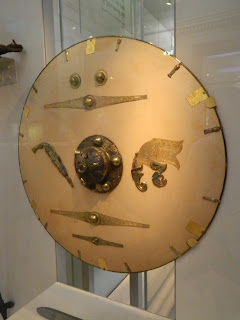
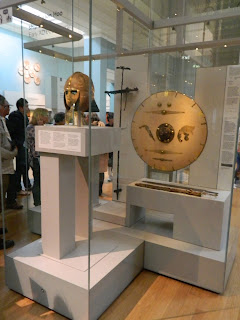
In early Anglo-Saxon England swords were the most prized weapons of all, being given as gift from lords and passed as heirlooms. Sutton Hoo sword (also replica of the edge is displayed) is the finest from the period, double bladed, iron edge fitted with gold hilt pieces, decorated with garnets imported from southern Asia, set into gold cells.
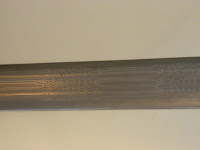
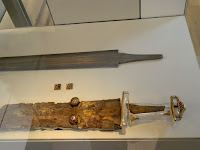
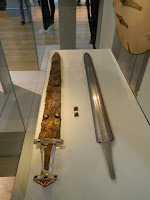
Sixteen pieces of silver tableware found within the burial are from Byzantine Empire, reaching Sutton Hoo through gift exchange between rulers of Europe, bringing Bizatine luxuries to Frankish realm and onwards to Anglo-Saxon England. At early Anglo-Saxon times silver tableware was a display of status or royal treasure, as wood or horn were used instead.
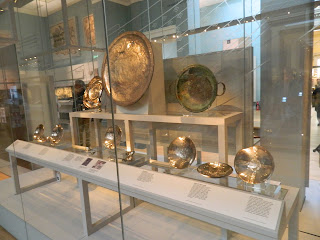

Two drinking horns were reconstructed, with original gilded silver mounts and depict interlacing beasts and human faces. Tips are shaped like fierce birds’ heads. The horns probably came from an aurochs, a large type of ox, which may have been imported from the Continent. Each horn held about two litres of mead or ale and may have been passed around in feasting rituals.
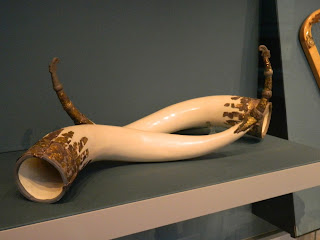

The form of the long carved whetstone and glittering shoulder-clasps evoke Roman symbols of authority, possibly a deliberate attempt to associate Anglo-Saxon owner with the might of the old Roman Empire.
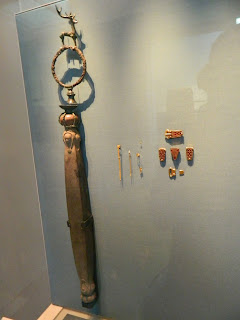
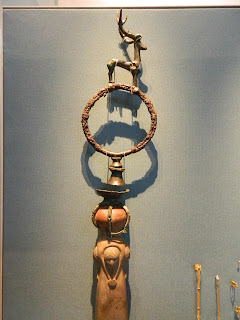
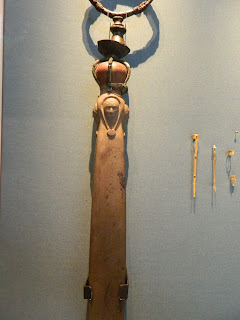
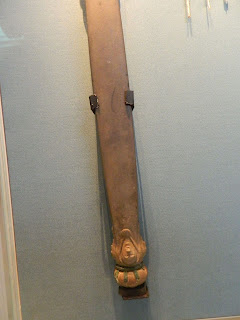
Shoulder-clasps displayed the power and authority of the wearer. Similar to those used in Roman forms of military dress, attached to a thick or padded garment using loops at the back. Made in two halves each one is decorated with cells inlaid with garnets and patterned millefiori glass. They are hinged around central animal-headed pin and shaped to fit the shoulder.
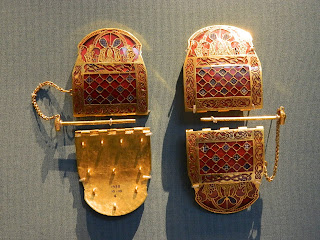
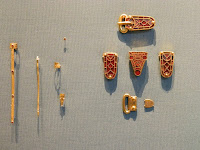

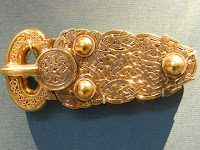
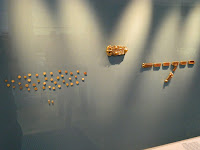
The burial contained three hanging bowls of differing size and decoration. It is unknown where these were made, but decoration and form suggests Celtic-speaking regions of Ireland or north and west Britain. Bowls may have held water for hand-washing. Hanging bowls were highly prized by Anglo Saxons, with examples being found in their graves, reflecting interactions with Celtic peoples. Bowls from Sutton Hoo burial show signs of repair, what suggests a cherished possession.
